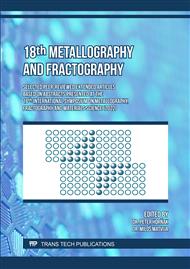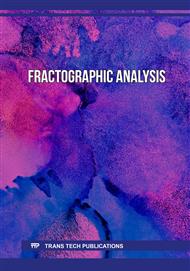p.21
p.27
p.33
p.39
p.45
p.51
p.57
p.65
p.73
Analysis of Tribodegradation Factors Limiting the Life of the Molds
Abstract:
The paper presents the results of research focused on the analysis of mold wear for high-pressure casting of aluminum alloys. The functional parts of the molds were taken out of operation. Molded parts for aluminum alloy casting molds and cores are made of tool chrome and chromium-molybdenum steels. In the die-casting process, the mold parts and cores are exposed to intense thermal, mechanical, and chemical loads. High melt flow rates of aluminum alloys (up to 120 m.s-1), high pressures (up to 120 MPa) and high maximum surface temperatures of mold parts (up to 550 °C) lead to erosion, abrasion, corrosion, and thermal fatigue of molds. The thermal load of the foundry cores is even higher (up to 600 °C) because they are not connected to the mold cooling system. Thermal cyclic loading from 80 °C to 550 °C leads to high tensile stresses on the surface of the molded parts / cores and consequently to the formation and propagation of thermal cracks. Frequent contact of the surface of the mold part with the melt causes the formation of growths (die soldering) due to corrosion caused by molten metals and consequently shortens the life of the mold parts and cores. Light and electron microscopy was used for mold analysis. Every degrading change in the shape of molds and cores will also affect the quality and dimensions of the castings.
Info:
Periodical:
Pages:
57-62
Citation:
Online since:
March 2023
Authors:
Keywords:
Price:
Сopyright:
© 2023 Trans Tech Publications Ltd. All Rights Reserved
Share:
Citation:



